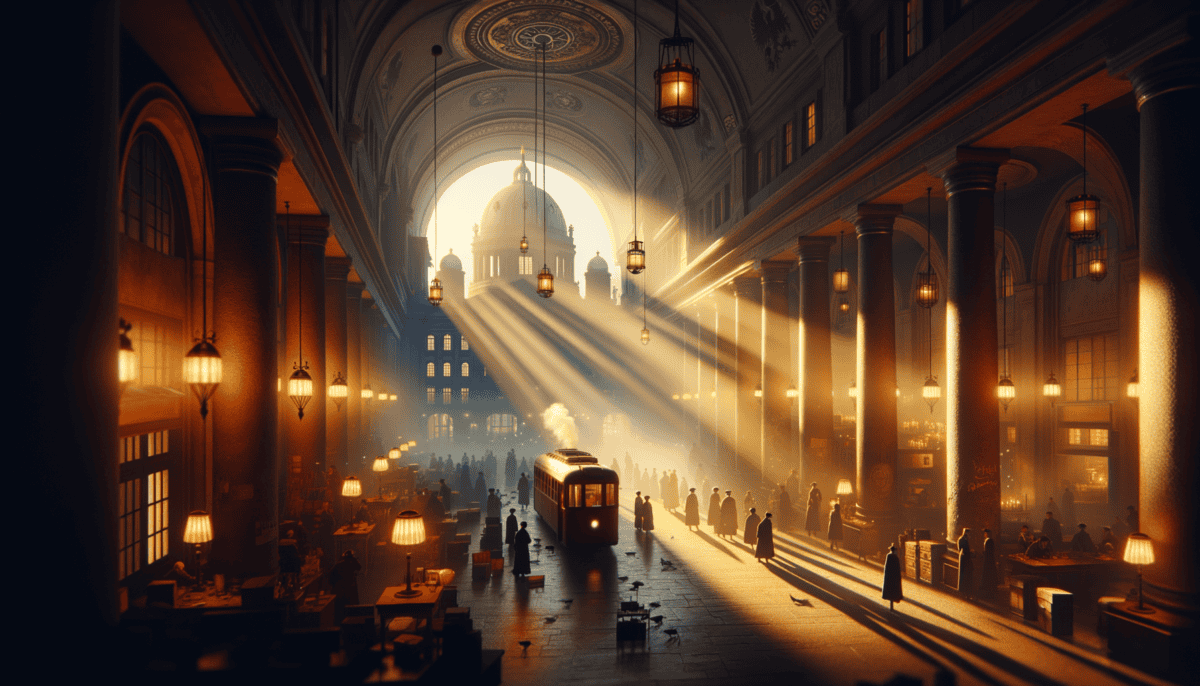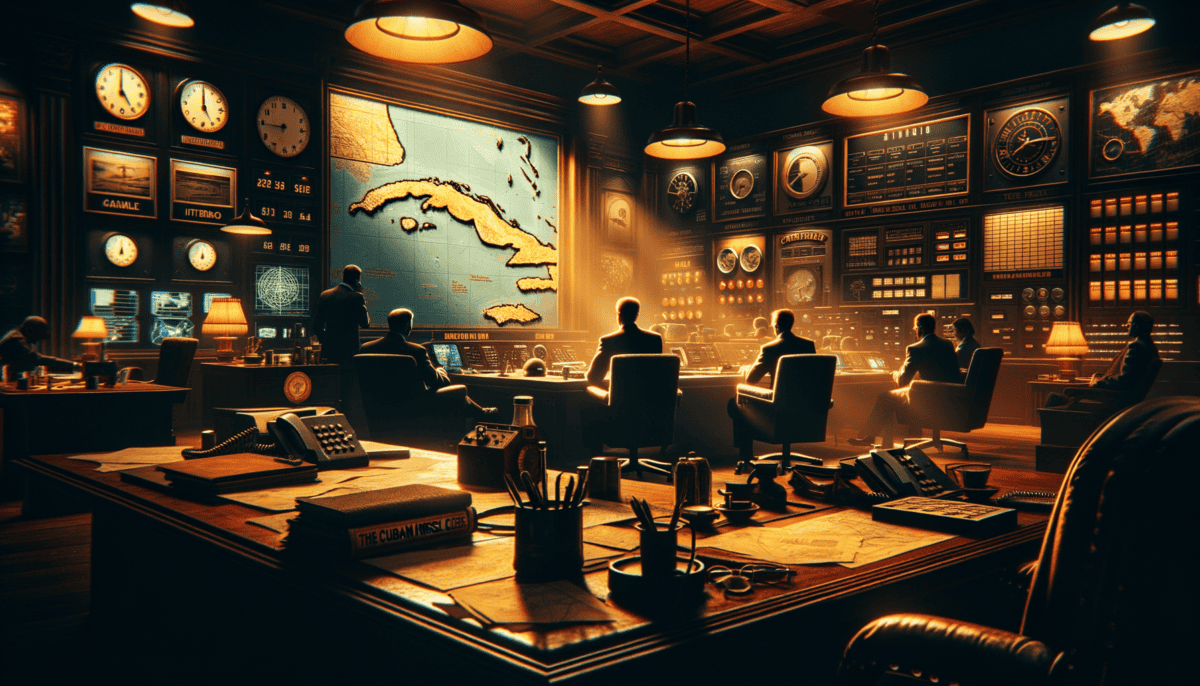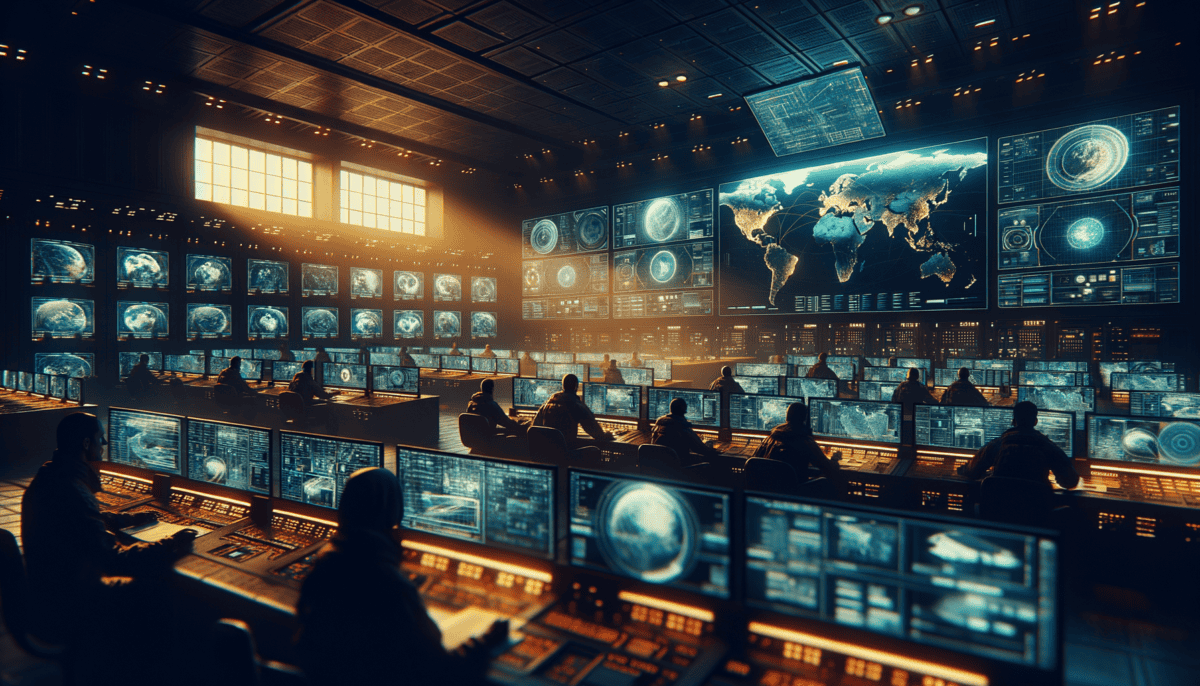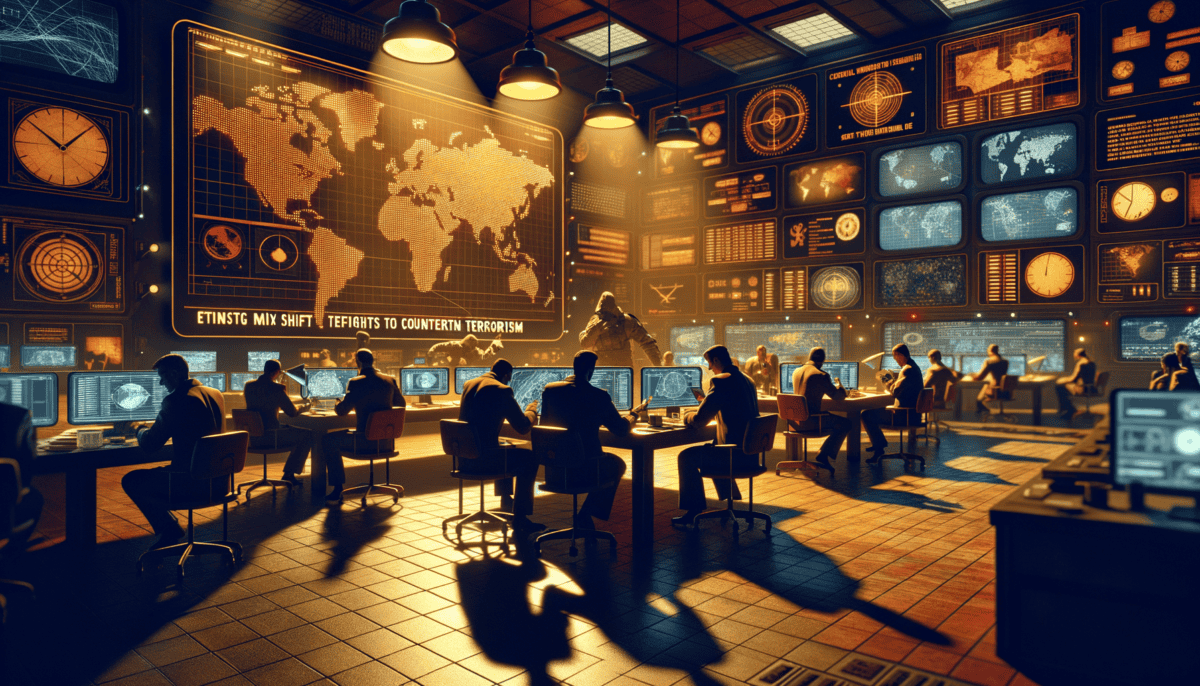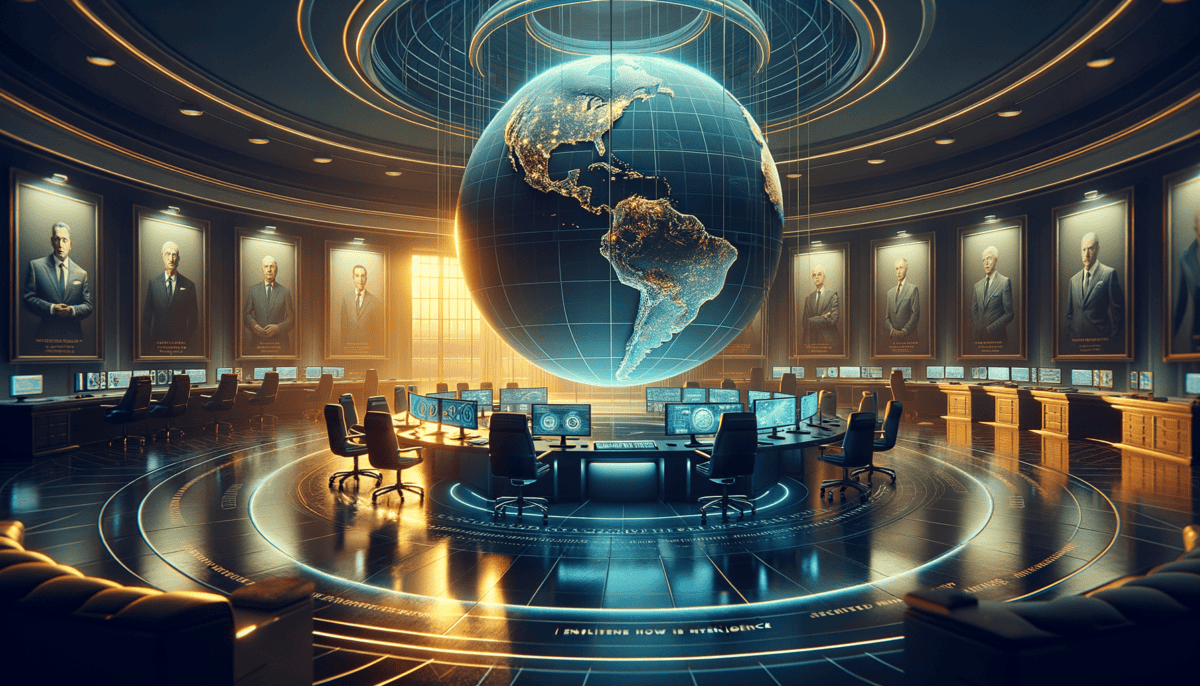A Spy Agency is Born
The year was 1947, and America needed heroes who worked in the shadows. World War II had just ended, but new dangers were coming. President Harry Truman knew the United States needed special people to keep our country safe. That's when he created the Central Intelligence Agency – the CIA. ️
Sarah Johnson sat at her desk, looking at the old black and white photo of her grandfather. He was one of the first CIA agents, back when it all started. The picture showed him standing proud in his uniform from the OSS – that's what came before the CIA.
"Grandpa," she whispered, touching the photograph gently. "What was it like in those early days?"
As if answering her question, she opened his diary from 1947:
Today we became something new. No longer the OSS, but the CIA. General Donovan says we’re making history. The war might be over, but our work is just beginning. We’re building networks across the globe, finding ways to gather information that could save American lives.
The CIA started with just a few hundred people, but they had a big job to do. They needed to:
- Watch for dangers to America
- Learn about other countries' secrets
- Help the president make smart choices
- Keep Americans safe from threats
"Agent Thompson, do you have a moment?" called Director Hillenkoetter from his office. He was the CIA's first leader, and everyone knew his serious face meant important business.
"Yes, sir," Thompson replied, straightening his tie as he walked in.
"We're building something special here," Hillenkoetter said, looking out his window at Washington, D.C. "This isn't just about collecting information. It's about protecting our way of life."
The new CIA agents worked day and night to create something that had never existed before. They set up offices in far-away places, learned new languages, and figured out ways to send secret messages.
Back in her office, Sarah found more of her grandfather's notes:
December 1947: Today we got our first big success. Our team in Europe found out something important about the Russians. The president himself said we did a good job. But nobody will ever know it was us. That’s what makes us different – we’re silent heroes.
The early CIA faced lots of problems. They needed to figure out who they could trust. They had to learn how to work with other parts of the government. Sometimes they made mistakes, but they always tried to learn from them.
One day, a young agent named David asked his trainer, "How do we know if we're doing the right thing?"
The older agent smiled and said, "We do our best to protect America. That's what matters most."
By the end of 1947, the CIA was growing stronger. They were learning new ways to gather information. They were building teams around the world. And they were getting ready for their biggest challenge yet – something called the Cold War.
Sarah closed her grandfather's diary and looked at his picture one more time. She was proud to know that her family had helped start something so important. The CIA would go on to face many challenges, but it all started with brave people like her grandfather who wanted to serve their country in a new way.
Outside her window, the sun was setting over Washington, D.C., just like it did when the CIA first began. The city looked different now, but the mission stayed the same: keeping America safe, one secret at a time.
Shadows of the Cold War
The world was changing fast in the 1950s. Sarah found more of her grandfather’s stories about this exciting time at the CIA. The United States and the Soviet Union were like two kids having a huge staring contest – neither wanting to blink first.
March 1950: Today we learned the Soviets have new secrets. Everyone is nervous. We need better ways to find out what they’re planning. It’s like a giant game of hide and seek, but much more serious.
CIA agents had to be super clever. They learned to use cool spy tools like tiny cameras hidden in buttons and special pens that could send secret messages. Agent Thompson, now older and wiser, trained new spies in a secret classroom.
“Remember,” Agent Thompson told his students, “being a spy isn’t like in the movies. It’s about being patient and careful.”
The CIA worked in many countries during this time. They had to:
- Watch what the Soviet Union was doing
- Help friendly countries stay safe
- Learn about new weapons other countries were making
- Keep America’s secrets safe
One day, a young agent named Maria discovered something important. She rushed into the office, her heart beating fast.
“Chief!” she called out. “The Soviets are building something big in Eastern Europe!”
The chief looked worried. “Show me everything you found,” he said quietly.
Sarah read about this in another diary entry:
July 1952: Maria’s discovery changed everything. We worked all night looking at her information. The president needs to know right away. This is why we do what we do – to protect America before danger gets too close.
The CIA also had to learn new technology. They started using big computers that filled whole rooms. They sent planes high into the sky to take pictures of other countries.
“It’s amazing,” whispered David, now a senior agent, as he looked at the first satellite photos. “We can see things we never could before.”
But being a spy wasn’t always exciting. Sometimes it meant sitting for hours, watching and waiting. Other times it meant reading hundreds of papers looking for tiny clues.
“Why do we have to read so much?” complained a new agent named Jack.
“Because,” explained Agent Thompson, “sometimes the smallest detail can tell us the biggest story.”
The CIA got better and better at its job. They learned to understand what other countries might do before they did it. They helped stop bad things from happening. But they had to keep everything secret.
Sarah found one last note from that time:
December 1955: Sometimes it’s hard not telling people what we do. But seeing America safe makes it worth it. The Cold War isn’t over, but we’re doing our part to protect everyone.
As the sun set over the CIA building, Sarah thought about how different things were back then. No internet, no smartphones, just brave people using their brains and courage to keep America safe. The Cold War would bring even bigger challenges, but the CIA was ready.
Agent Thompson’s words to his students seemed to echo through time: “Remember, in our line of work, the quietest heroes often make the biggest difference.”
Secrets and Science
Sarah’s hands trembled as she opened a dusty folder marked “Operation Paperclip.” Inside, she found stories about one of the CIA’s biggest missions – bringing scientists to America after World War II.
“Some choices are hard,” her grandfather’s voice seemed to whisper from the pages of his diary. “But sometimes doing the right thing isn’t simple.”
October 1962: The world is holding its breath. Soviet ships are heading to Cuba with missiles. President Kennedy needs our eyes and ears more than ever.
The Cuban Missile Crisis was like a dangerous game of chess. CIA planes flew high above Cuba, taking pictures of missile sites. Every piece of information was important.
“Get those photos to the President right away!” Agent Thompson commanded. His usually calm voice showed worry.
Meanwhile, in secret labs across America, scientists brought over by Operation Paperclip were making amazing discoveries. They helped America:
- Build better rockets for space travel
- Create new ways to gather intelligence
- Understand foreign technology
- Stay ahead in science and medicine
Dr. Anna Schmidt, a young scientist working with the CIA, made an exciting breakthrough. “Look at this!” she called to her team one morning. “We can now see things from space that we never could before!”
Sarah found a photo of Dr. Schmidt and her team celebrating their success:
March 1963: Today we proved that science can help keep peace. Our new satellite system will change everything about how we gather intelligence.
But not everything was about technology. CIA agents still had to make tough choices. Agent Maria found herself facing one such moment.
“There’s a scientist who wants to help us,” she reported to her boss. “But helping him leave his country could cause problems.”
“Sometimes we have to think about what’s best for everyone,” her boss replied softly.
The CIA learned that protecting America meant more than just stopping bad guys. It meant understanding science, helping people make hard choices, and sometimes doing things that wouldn’t be understood until many years later.
Sarah’s grandfather wrote about this too:
June 1964: Today I watched young agents learning about both science and ethics. They need to be smart AND good. That’s what makes the CIA special.
Back in the present, Sarah looked at a modern CIA building through new eyes. Behind those walls, people were still making hard choices and using science to protect America. Some things hadn’t changed at all.
Agent Thompson’s last diary entry from this time caught her eye: “Technology changes, but our mission stays the same – keep America safe, no matter what.”
As the sun set outside the window, casting long shadows across the CIA archives, Sarah carefully closed the folder. The stories of science, tough decisions, and brave people would stay with her forever.
Digital Shadows
The computer screen flickered in the dim light as Agent Maya Chen stared at lines of code racing across her monitor. The year was 1983, and the CIA was entering a new world of spy craft.
“This changes everything,” she whispered, watching as satellite images appeared pixel by pixel on her screen.
The first time I saw a digital satellite image, I knew we’d never look at intelligence the same way again. – Agent Chen’s Personal Log, 1983
Down the hall, in a room filled with humming machines, Tom Wilson worked on something special. “KH-11,” he called it – a super camera in space that could see through clouds.
“Remember when we had to wait days for spy plane photos?” Sarah asked, looking through old records. “Now we get pictures in hours!”
The CIA’s new tools for spying included:
- Spy satellites that could see at night
- Computers that could break codes fast
- Special cameras hidden in tiny places
- New ways to listen to radio signals
- Early versions of the internet
“But technology isn’t everything,” Agent Chen reminded her team. She pointed to a photo of an agent in the field. “We still need brave people doing the hard work.”
One morning, Agent Wilson rushed into Chen’s office. “Maya! The Russians have something new – something big!”
Using their new computer systems, they found Russian scientists were working on super-fast planes. Thanks to satellite photos and special listening devices, the CIA knew exactly what was happening.
Technology is like a game of leapfrog. Everyone keeps trying to jump ahead. – CIA Director’s Note, 1985
But with new technology came new problems. “Someone tried to hack our computers!” a young analyst named Mike shouted one day. The CIA had to learn how to protect not just secrets, but computer systems too.
Agent Chen wrote in her diary that night:
The spies of tomorrow won’t just need to be brave – they’ll need to be smart about computers and science too.
Sarah found pictures of the first CIA computer room – it was huge! Now, agents could carry more power in their phones than those early computers had.
“Look at this old satellite photo,” Wilson showed Chen. “And here’s one from our new system.” The difference was amazing – like comparing a kid’s drawing to a photograph.
But even with all the new gadgets, the CIA never forgot what was most important – protecting America and its people. Agent Chen made sure every new agent understood this.
“Our tools may change,” she would say, “but our mission stays the same.”
As the 1980s came to an end, the CIA was ready for a new age of spying. Computers, satellites, and the internet would change everything about how they worked. But the bravery and dedication of CIA agents remained as strong as ever.
In the growing darkness of her office, Agent Chen typed one last note: “The future is digital, but the heart of intelligence will always be human.”
Invisible Warriors
The morning sun barely peeked through the heavy clouds as Agent Chen walked into CIA headquarters on September 12, 2001. Everything had changed overnight.
“This is a different kind of war,” Director Thompson announced to the packed room. “And we need a different kind of spy.”
Maya Chen, now a senior agent, looked at the tired faces around her. No one had slept since yesterday’s attacks. Computers hummed as analysts pored over data, searching for clues about who had attacked America.
“We need eyes everywhere,” Sarah explained to the new agents. She pointed to a world map covered in red dots. Each one showed where terrorists might be hiding.
The CIA created special teams to fight terrorism:
- Computer experts who tracked bad guys online
- Agents who worked with other countries
- Special units that hunted terrorist leaders
- Analysts who studied terrorist messages
- Teams that protected American buildings
“Remember when our biggest worry was Soviet spies?” Tom Wilson asked Chen as they worked late one night. “Now we’re chasing shadows across the internet.”
One morning in 2004, young Agent Mike burst into Chen’s office. “We found something! A message about a planned attack!”
Thanks to their quick work, the CIA stopped the bad guys before they could hurt anyone. But Chen knew there would always be more threats to find.
Every victory means someone’s family stays safe tonight. That’s why we do this. – Agent Chen’s diary, 2005
The hunt for Osama bin Laden became the CIA’s biggest mission. For ten years, agents worked day and night to find him. They used every tool they had – satellites, spies, and lots of smart people working together.
“It’s like finding one person in a million hiding places,” Sarah told her team. But they never gave up.
But there was always more work to do. Chen trained new agents, teaching them to use both their brains and their hearts.
“Technology helps us find the bad guys,” she would say, “but understanding people helps us stop them.”
Around the world, CIA agents worked with other countries to make everyone safer. They shared what they knew and helped each other catch terrorists.
“We’re stronger when we work together,” Director Thompson told a room full of agents from different countries.
As Agent Chen looked at her computer screen late one night, she saw messages from CIA teams all over the world. They were working hard to keep people safe.
“The world changed,” she typed in her final report of the day, “and so did we. But we’ll never stop protecting people.”
Guardians of Tomorrow
Agent Chen stood at her desk, packing up her most treasured items. After 30 years of service, today was her last day at the CIA.
“The world keeps changing,” she said to Sarah, who was now a senior agent herself. “And so must we.”
The office looked very different from when Chen first started. Instead of paper files, young agents worked on sleek computers. Screens showed information from all over the world. ️
• Computer attacks from other countries
• Secret messages hidden in social media
• Fake news that could fool people
• Hackers trying to steal secrets
• New kinds of weapons
“Remember when we thought smartphones were high-tech?” Tom laughed, helping Chen pack. “Now we have AI helping us spot danger before it happens!”
Chen smiled at the new group of agents training in the next room. They came from all different backgrounds, each bringing special skills to help protect America.
“What’s the most important lesson you learned?” asked Mike, who was now training new agents himself.
“That our greatest power isn’t in our gadgets,” Chen replied. “It’s in our hearts and minds working together to protect people.”
Director Thompson called everyone together for Chen’s farewell ceremony. The room was packed with agents old and new.
“Maya Chen showed us that being a good spy means being a good person first,” he said. “She taught us that protecting others is the noblest mission of all.”
Before leaving, Chen wrote one last note in her diary:
We face new challenges every day. But as long as brave people stand ready to protect others, hope will always be stronger than fear. The next generation will write their own stories of courage and service.
As Chen walked out of headquarters for the last time, she saw a young agent leading a tour group of students. Their eyes were wide with wonder.
“Who knows?” the young agent said to the students. “Maybe someday one of you will help protect our country too!”
Chen smiled. The CIA’s mission would continue, evolving to face whatever challenges tomorrow might bring. New agents would rise to protect people in ways she could only imagine.
Looking back at the building one last time, Chen knew the future was in good hands. The next chapter of America’s intelligence story was just beginning.


